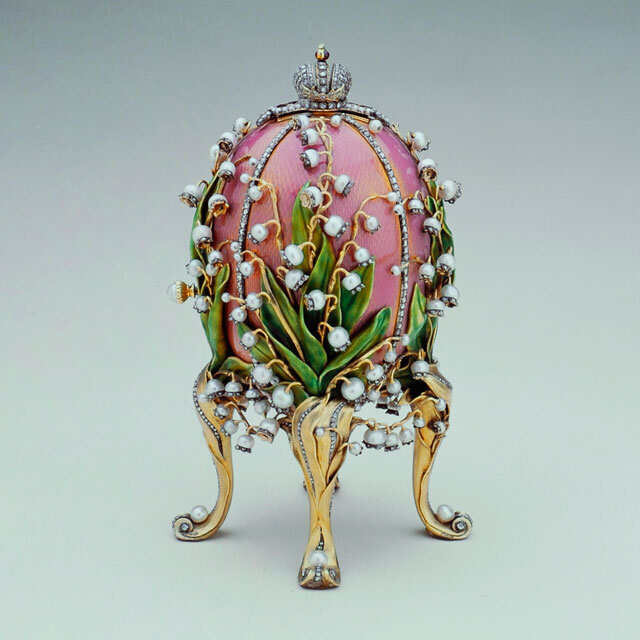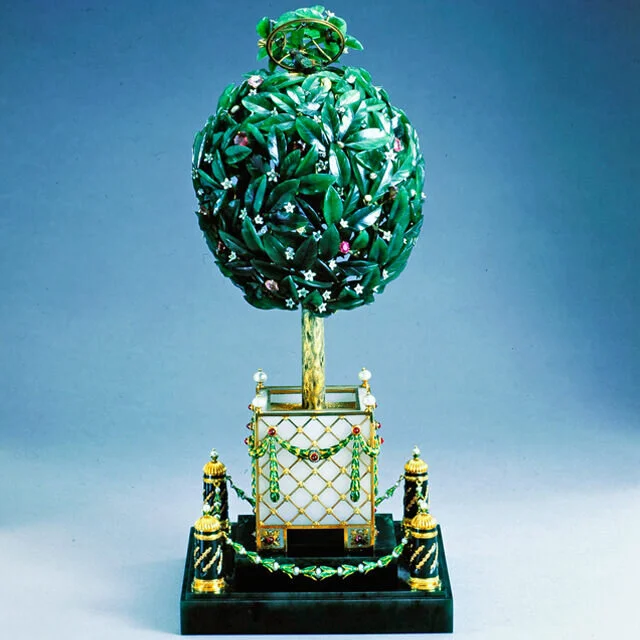The Fabergé Egg Easter Tradition
The most iconic series of eggs are widely recognized as objects of high craftsmanship and wealth from the Russian Empire. It’s easy to only think of their museum quality and high values, but to understand more about the evolution of the egg as a gift, we need to know Carl Fabergé a bit better. He was a master craftsperson with a sense of ‘fantaisie’ and he revived the lost art of enamel into a Russian tradition through these Imperial Eggs.
Peter Carl Fabergé was born in St. Petersburg, Russia, the son of a German jeweler who ran the family business, the House of Fabergé, with a partner.
Carl Fabergé studied at a German school in Russia and his father eventually retired from the business, leaving it to his partner and moving his family to Dresden, Germany. It was in Dresden where Carl began his formal training as a jeweler taking courses at the Dresden School for Arts and Crafts.
In 1864, at age 18, Carl embarked on a Grand Tour of Europe visiting many museums and furthering his studies in the opulent art nouveau era of decorative arts. He traveled for the next 8 years, learning from goldsmiths in Germany, England and France, attending courses in Paris and observing decorative objects in galleries and museum through Europe ever more closely.
Returning to St. Petersburg, his father’s partner stepped down as the lead of the House of Fabergé and at age 36, Carl Fabergé took over the family business with his younger brother as his assistant.
The brothers were recognized by the Russian Tzar Alexander III during the Pan-Russian exhibition of 1882, as they produced a replica of a 4th-century BC gold bangle from the Scythian Treasure from the Hermitage, which is the second-largest art museum in the world, located in St. Petersburg.
This royal recognition resulted in a commission that Tzar Alexander requested a special egg be made as a gift for the Tsarina, as an Easter present. Alexander recognized the superior craftsmanship of Carl Fabergé, but also the design and humor that made his objects so desirable. Alexander wanted something just as amusing for his wife, and Carl did not disappoint.
Following the huge success of the first egg in the series, the Hen Egg, a white enamel shell that is about 2.5” tall, and opened to reveal a golden egg with a perfectly carved golden chicken and ruby eyes. The Tsarina loved it, and so began the tradition of the Fabergé egg gifts of Easter.
Immediately following the presentation of the first egg, Fabergé was given the title, Goldsmith by special appointment to the Imperial Crown. This meant that Fabergé now had full personal access to the important Hermitage Collection, where he was able to study and find inspiration for developing his unique personal style. He found great inspiration in French object design and Japanese art, which resulted in a revival of the lost art of enameling.
Enamel was a prominent material used in the Fabergé eggs. The materials that Carl Fabergé employed were imperative in supporting the design, not just for pure opulence. The Tzar appreciated the craftsmanship as a much greater value than the karat content. The design and great lengths at which the details were employed required up to one years’ time to perfect one egg.
Carl Fabergé continued as the premier goldsmith of Russia and has cemented a legacy of high craftsmanship through designing and creating the most well-known collection of Imperial Eggs in world history.







